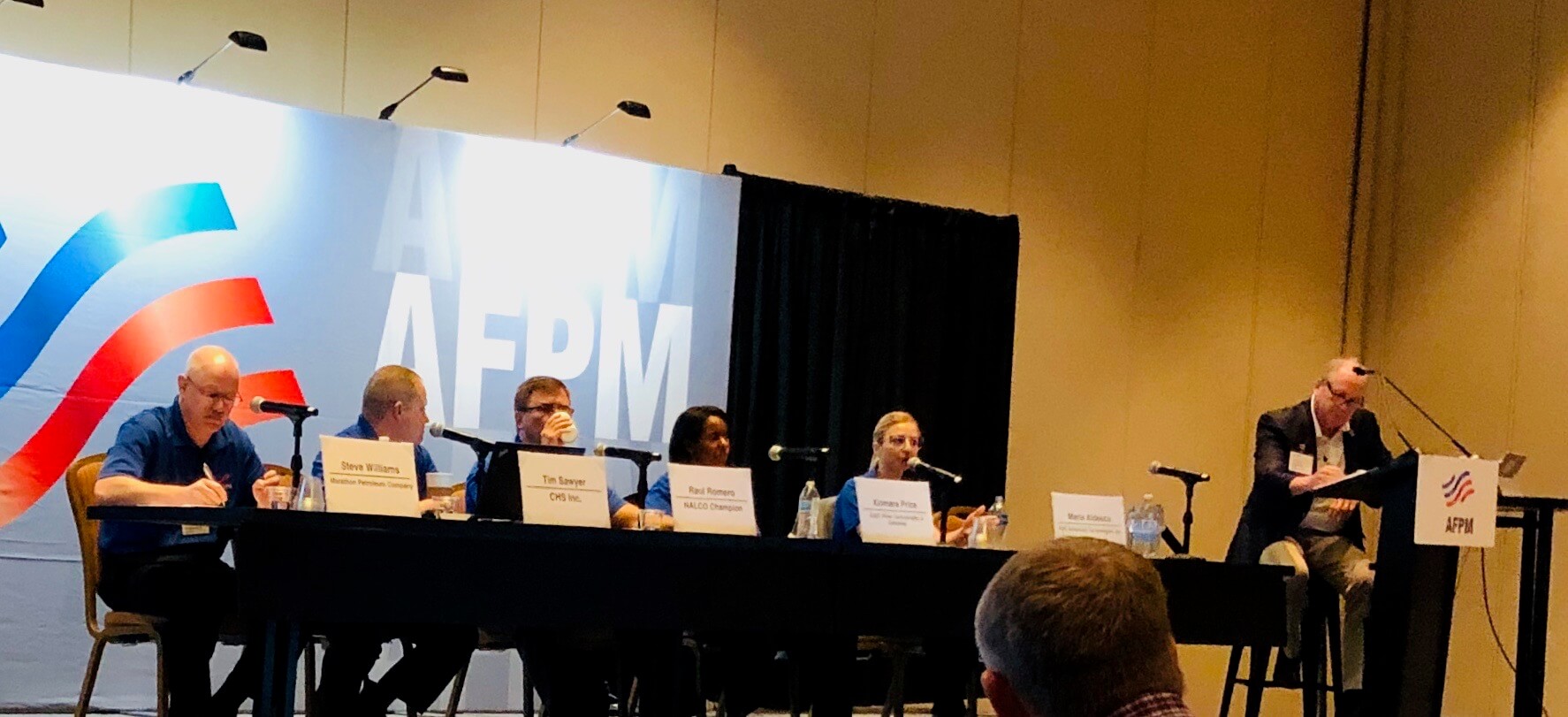One of the key parts of the AFPM Operations & Process Technology Summit is the Q&A Panel sessions. I attended the Crude/Vacuum Distillation & Coking Q&A session with a panel of experienced refiner professionals.
The first question was about meeting H2S specification in the vapor space in the shipping or receiving points in shipping intermediate streams from refinery to refinery. The one panelist noted that they were using a zinc-based scavenger to keep the levels within specification. Another panelist noted that metal-based and triazine-based scavengers have their advantages and disadvantages that need to be weighed depending on specification requirements.
A question came in about how one optimizes the dosage of scavengers. A panelist noted that trial & error is the approach they use to monitor the H2S space and arrive at the optimum quantity of scavengers to use.
Another question was about eliminating the use of anhydrous ammonia and chlorine. While substitutes such as biocides for cooling towers have effectively replaced chlorine use, anhydrous ammonia is still used in various applications.
Crude analysis is important when blending multiple crude unit feedstocks to avoid downstream fouling. Analytics are still quite complex and being refined. It’s not just the chemical compatibility of the different crudes but the thermodynamics (pressures, temperatures, flow rates) of the process to keep the asphaltenes from precipitating out of solution.
One refiner in the audience noted that refiners should assume the crude coming into the plant is a blend and you’ll be right 90% of the time. You have to have anti-fouling mitigation strategies to deal with the asphaltenes. Also, refiners use assays in the purchase of crude, but if the assay is more than a few weeks old, consider it not valid. You’ll need a sample of the crude in transit to the refinery. About have the session attendees use online analyzers and half use models to detect crude incompatibilities.
The next question came in about the best way to mud wash to prevent solids build up in the desalter. One panelist did trials doing continuous mud wash, intermittent mud wash and no mud wash. The continuous mud wash kept the desalter bottom fairly clean, while both the intermittent and no mud wash methods had build-up. Their decision was to use continuous mud wash as part of their operational procedures.
Another panelist noted that intermittent mud washing work OK for the light, sweet crudes, but heavier crudes with salts likely will need continuous mud washing. The source of the wash water is also very important.
Unfortunately this is all I could capture before attending another session.





